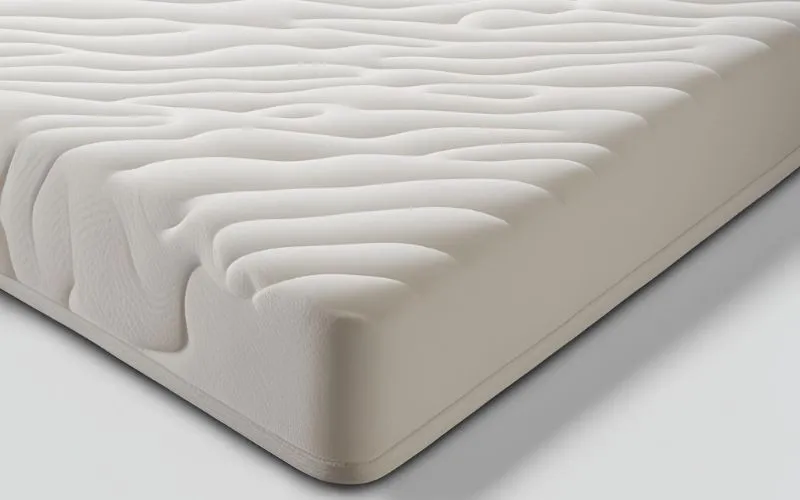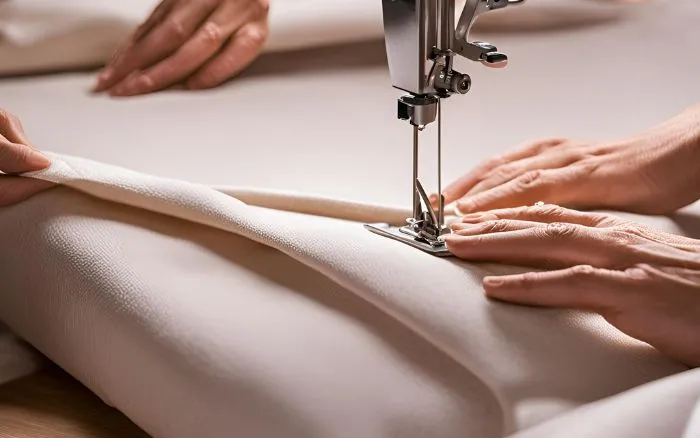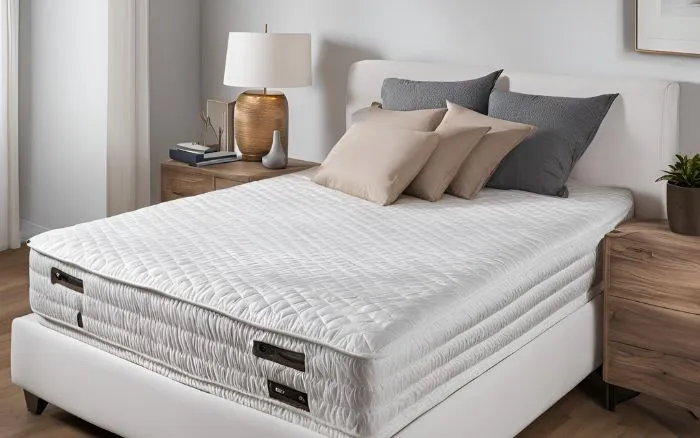Memory Foam Mattresses for Healing: Complete Guide

Introduction
Welcome to the ultimate guide to memory foam mattresses for healing with adjustable beds. In this comprehensive article, we will explore the benefits of memory foam mattresses, types of memory foam, tips for maintenance, and how to choose the right mattress for your needs. Whether you’re looking to alleviate pressure, improve spinal alignment, or regulate temperature, this guide has you covered. Let’s dive in!
What is Memory Foam?
Memory foam is a specialized type of polyurethane foam that reacts to body heat and weight, conforming to the body’s contours and then returning to its original shape once the pressure is removed. It was initially developed for NASA in the 1960s to improve the safety of aircraft cushions, and it has since been widely used in mattresses, pillows, and other bedding products due to its pressure-relieving properties.
How Memory Foam Mattresses Aid in Healing
Pressure Relief
Memory foam mattresses are renowned for their ability to relieve pressure points by evenly distributing body weight. This can significantly reduce discomfort for individuals who spend extended periods in bed, such as those recovering from surgery or managing chronic pain.
- Pressure Relief
- Even Distribution of Body Weight
- Reduced Discomfort for Surgery Recovery
- Reduced Discomfort for Chronic Pain Management
Spinal Alignment
Memory foam mattresses are renowned for their exceptional ability to promote proper spinal alignment. The conforming nature of memory foam allows it to adjust to the natural curvature of the spine, providing personalized support to each individual’s back. This personalized support is crucial for maintaining the spine’s natural alignment and reducing the risk of back pain and discomfort.
- Even Weight Distribution:Memory foam evenly distributes body weight along the spine, preventing pressure points and ensuring proper alignment.
- Posture Support: By cushioning the body and providing support to pressure points, memory foam helps maintain proper posture during sleep, contributing to spinal health.
- Recovery from Spinal Issues: The exceptional support provided by memory foam mattresses aids in the healing process for individuals with spinal issues, promoting better sleep quality and faster recovery.
Temperature Regulation
Memory foam mattresses are designed to regulate body temperature and provide optimal comfort for a restful night’s sleep. Here are some key points to consider:
- Adaptive Material: The unique properties of memory foam allow it to respond to body heat, becoming softer in warmer areas and firmer in cooler spots. This adaptive feature ensures a consistent level of comfort throughout the night.
- Temperature Sensitivity: Memory foam is sensitive to changes in body temperature, which promotes the regulation of heat. This can be particularly beneficial for individuals with specific medical conditions, as it helps to maintain a comfortable sleeping environment.
- Air Circulation: Some memory foam mattresses are designed with enhanced airflow technology to facilitate better air circulation, aiding in temperature regulation and reducing the risk of overheating during sleep.
Motion Isolation
Memory foam mattresses are renowned for their exceptional motion isolation properties. This feature is highly beneficial for individuals sharing a bed, as it minimizes the transfer of motion from one side of the bed to the other. As a result, movements such as tossing, turning, or getting in and out of bed are unlikely to disturb the other person. This not only enhances the overall quality of sleep but also promotes a peaceful and undisturbed rest, which is essential for the healing process of both individuals.
- Memory foam’s ability to absorb and dampen motion makes it ideal for couples who may have different sleep schedules or habits.
- It is especially beneficial for individuals who are light sleepers and easily disturbed by external movements.
- The motion isolation properties of memory foam contribute to a tranquil sleep environment, further aiding in the rejuvenation and healing process.
Types of Memory Foam Mattresses
Traditional
Traditional memory foam mattresses are constructed with viscoelastic foam, which is heat-sensitive and able to mold to the body’s shape. These mattresses are known for their exceptional pressure relief and adaptability, making them an excellent choice for healing and comfort.
Gel-Infused
Gel-infused memory foam mattresses are designed with advanced technology to provide enhanced comfort and support for a restful night’s sleep. By incorporating gel beads or gel-infused foam, these mattresses offer a range of benefits that contribute to a superior sleep experience.
Here are some key features and benefits of gel-infused memory foam mattresses:
- Improved Air Circulation: The inclusion of gel beads or gel-infused foam promotes better air circulation, creating a cooler and more breathable sleeping surface.
- Regulated Body Temperature: The innovative technology of gel-infused mattresses helps regulate body temperature, preventing overheating and ensuring a comfortable sleeping environment.
- Pressure Relief: Gel-infused memory foam conforms to the body, providing targeted support and alleviating pressure points for enhanced comfort.
- Enhanced Durability: The addition of gel beads or gel-infused foam contributes to the durability and longevity of the mattress, offering long-lasting performance.
Individuals who are sensitive to heat or experience discomfort due to temperature fluctuations can benefit significantly from the cooling properties and body-contouring capabilities of gel-infused memory foam mattresses.
Open-Cell
Open-cell memory foam mattresses are designed with a unique structure that sets them apart from traditional and gel-infused memory foam options. The open-cell structure provides enhanced breathability and improved airflow, allowing for better temperature regulation and a cooler sleeping experience.
Here are some key benefits and features of open-cell memory foam mattresses:
- Enhanced Airflow: The open-cell design allows for better air circulation within the mattress, which helps dissipate body heat and moisture, promoting a cooler sleeping environment.
- Breathability: By promoting better airflow, open-cell memory foam mattresses are known for their breathability, making them ideal for individuals who tend to sleep hot or experience night sweats.
- Temperature Regulation: The improved airflow and breathability contribute to better temperature regulation, ensuring a comfortable and consistent sleep surface.
- Pressure Relief: While providing excellent support, open-cell memory foam also offers pressure-relieving benefits, conforming to the body’s natural curves and reducing stress on pressure points.
When considering an open-cell memory foam mattress, it’s important to note that these mattresses are particularly suitable for individuals who prioritize a cooler and more comfortable sleeping experience. Additionally, they are an excellent choice for those seeking pressure relief and support without sacrificing breathability.
Plant-Based
Plant-based memory foam mattresses are an excellent choice for eco-conscious individuals who want a durable and sustainable sleep solution. Unlike traditional memory foam mattresses that rely heavily on petroleum-based materials, plant-based memory foam utilizes natural plant oils in their manufacturing process. These mattresses offer numerous benefits, including:
- Eco-Friendly Design: Plant-based memory foam mattresses are manufactured with a focus on environmental sustainability, using renewable plant-based materials to reduce the carbon footprint.
- Enhanced Breathability: The use of natural plant oils allows for better breathability, reducing heat retention and promoting a cooler sleeping environment.
- Healthier Sleep Environment: Plant-based memory foam is free from harmful chemicals commonly found in traditional mattresses, making it an ideal choice for individuals with sensitivities or allergies.
- Exceptional Pressure Relief: Similar to traditional memory foam, plant-based memory foam provides exceptional pressure-relieving benefits, contouring to the body’s natural shape for optimal support.
When considering a plant-based memory foam mattress, it’s essential to look for certifications such as CertiPUR-US and OEKO-TEX Standard 100, which ensure that the mattress meets stringent environmental and health criteria.
Choosing the Right Memory Foam Mattress
Firmness Level
When selecting a memory foam mattress, consider the firmness level that best suits your individual needs. A range of firmness options is available, from soft to medium to firm, allowing you to choose a mattress that provides the ideal level of support and comfort. However, determining the right firmness level can be a challenging task. To assist you in making an informed decision, here are some key points to consider:
- Sleeping Position: The firmness of a mattress can significantly impact your sleeping experience based on your preferred sleeping position. For instance, side sleepers may benefit from a softer mattress, while back or stomach sleepers may require a firmer surface to maintain proper spinal alignment.
- Body Weight: Your body weight plays a crucial role in determining the ideal firmness level. Heavier individuals may find firmer mattresses more supportive, while lighter individuals may prefer a softer feel for adequate pressure relief.
- Pressure Points: Consider how the mattress conforms to the unique shape of your body, particularly around pressure points such as the hips, shoulders, and lower back. The right firmness level should provide adequate support to alleviate pressure and promote proper circulation.
By carefully evaluating these factors, you can make a well-informed decision when selecting the firmness level of your memory foam mattress, ensuring that you achieve the ultimate balance of comfort and support.
Density
When it comes to choosing the right memory foam mattress, the density is a crucial factor to consider. The density of a memory foam mattress refers to the weight of one cubic foot of mattress foam. Understanding the density of memory foam can help you determine the durability, support, and performance of the mattress.
- High-density mattresses are known for their exceptional durability and long lifespan.
- They provide strong support, making them ideal for individuals with back pain or those seeking enhanced support for proper spinal alignment.
- These mattresses have minimal motion transfer, making them a great choice for couples.
- Low-density mattresses offer a plush, softer feel, making them ideal for those who prefer a more cushioning sleep surface.
- They respond quickly to pressure, contouring to the body’s shape and relieving pressure points.
- These mattresses are suitable for individuals who prioritize comfort and prefer a mattress that conforms closely to the body.
Thickness
Thickness
- Consider the thickness of the memory foam mattress, as this will impact its overall comfort and support.
- Thicker mattresses may provide additional cushioning and support.
- Thinner mattresses offer a more streamlined profile.
Certifications and Quality Standards
When choosing a memory foam mattress, it’s important to consider the certifications and quality standards that ensure the product’s safety and environmental impact. Look for mattresses that have been certified by reputable organizations such as CertiPUR-US or Oeko-Tex. These certifications guarantee that the mattresses meet stringent quality and safety standards, are free from harmful chemicals, and adhere to environmentally friendly manufacturing practices.
Here are some key points to keep in mind when considering certifications and quality standards for memory foam mattresses:
- CertiPUR-US Certification:
- The CertiPUR-US certification signifies that the mattress has been tested and certified to meet specific criteria for content, emissions, and durability. It ensures that the foam used in the mattress is made without ozone depleters, PBDE flame retardants, mercury, lead, and other heavy metals. Additionally, it has low VOC (Volatile Organic Compound) emissions for indoor air quality.
- Oeko-Tex Standard 100:
- The Oeko-Tex Standard 100 certification confirms that every component of the mattress, including the fabric, foam, and other materials, has been tested for harmful substances and is free from allergenic dyes and chemicals. It sets strict limits on emissions of harmful substances and prohibits the use of certain chemical substances.
By prioritizing certifications and quality standards, you can be confident in choosing a memory foam mattress that not only provides exceptional comfort but also upholds safety and environmental responsibility.
Tips for Maintaining a Memory Foam Mattress
Cleaning and Care
Regular maintenance of a memory foam mattress is essential for its longevity and performance. Here are some detailed steps to help you care for your memory foam mattress:
- Spot Cleaning: Use a mild detergent and water to spot clean any spills or stains on the mattress surface. Avoid using harsh chemicals or scrubbing vigorously to prevent damage to the foam.
- Air Circulation: Proper airing of the mattress is crucial to prevent moisture buildup, which can lead to mold and mildew. Open windows or use a fan to promote air circulation in the room.
- Mattress Protector: Investing in a high-quality mattress protector is an effective way to shield your mattress from spills, dust, and allergens. It acts as a protective barrier, prolonging the life of your memory foam mattress.
- Maintenance Schedule: Create a regular maintenance schedule to ensure that your mattress remains clean and well-cared for. This can include a thorough cleaning every few months and spot checks for any signs of wear or damage.
Rotating and Flipping
Rotating and Flipping
- Rotating the mattress promotes even wear and prevents sagging in specific areas
- Memory foam mattresses should not be flipped, but rotating them once every few months ensures prolonged comfort and support
- Prevents the mattress from developing permanent body impressions
Use of Mattress Protectors
When it comes to caring for your memory foam mattress, investing in a high-quality mattress protector is paramount. A mattress protector serves as a protective barrier, safeguarding your mattress from spills, stains, and the infiltration of bed bugs. Let’s delve into the benefits and considerations of using mattress protectors:
- Enhanced Hygiene: A mattress protector acts as a shield, preventing sweat, dead skin cells, and other bodily fluids from seeping into the mattress, thus promoting a cleaner sleeping environment.
- Extended Longevity: By forming a protective layer over the mattress, a mattress protector helps to prolong the lifespan of your memory foam mattress, reducing wear and tear over time.
- Health Considerations: For individuals prone to allergies, using a mattress protector can minimize exposure to allergens, providing relief from common allergic reactions.
- Preservation of Comfort: The use of a mattress protector ensures that the comfort and feel of your memory foam mattress remain consistent, maintaining a cozy and comfortable sleeping surface.
Conclusion
Memory foam mattresses offer a myriad of benefits, making them an ideal choice for individuals seeking healing and comfort. With their pressure-relieving qualities, temperature regulation, and adaptability, memory foam mattresses play a crucial role in promoting restful and rejuvenating sleep, contributing to overall well-being and healing. As you explore the various types and factors to consider when choosing a memory foam mattress, you’re empowered to make an informed decision that aligns with your specific needs. Here’s to a restorative and healing sleep experience!




